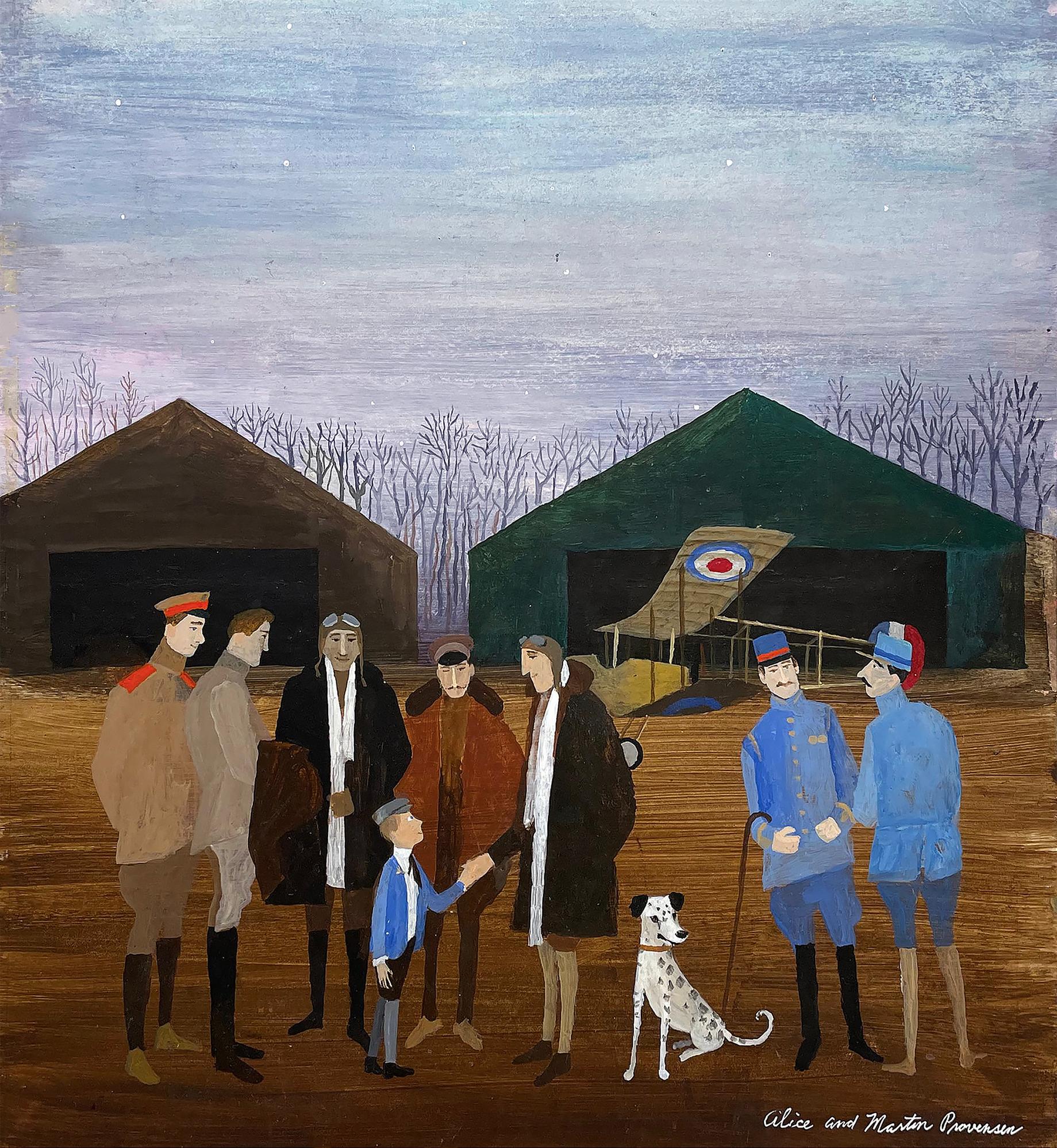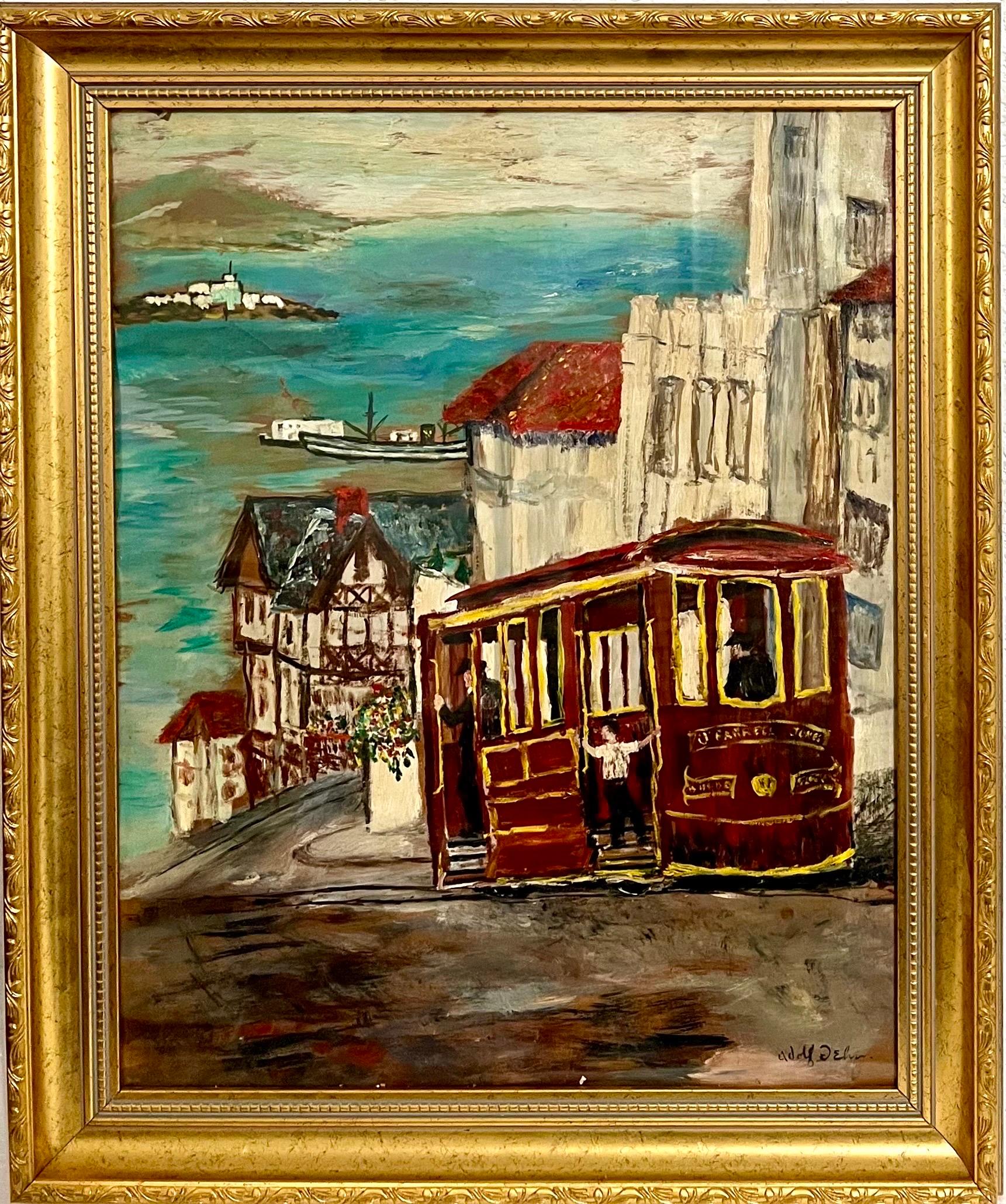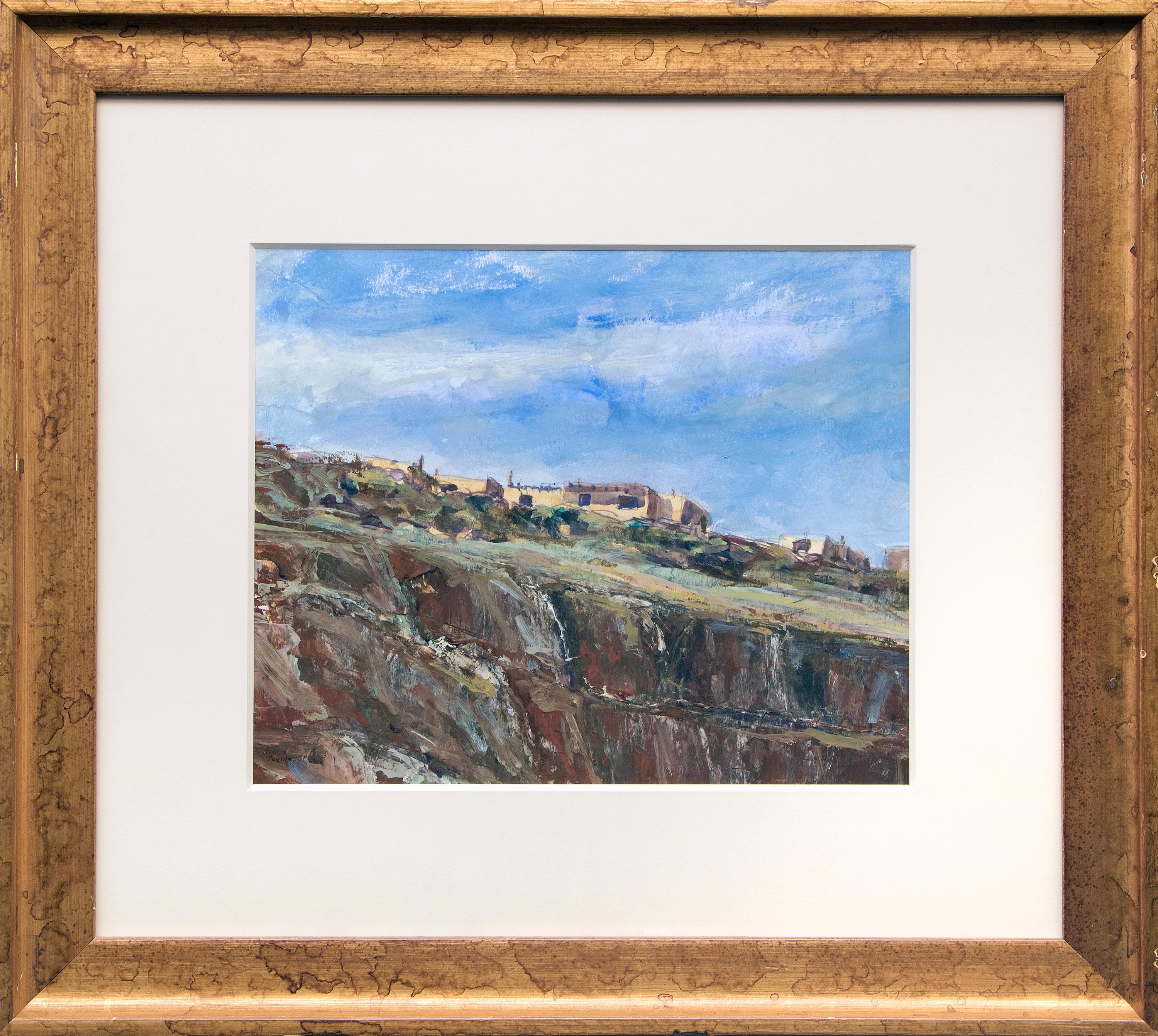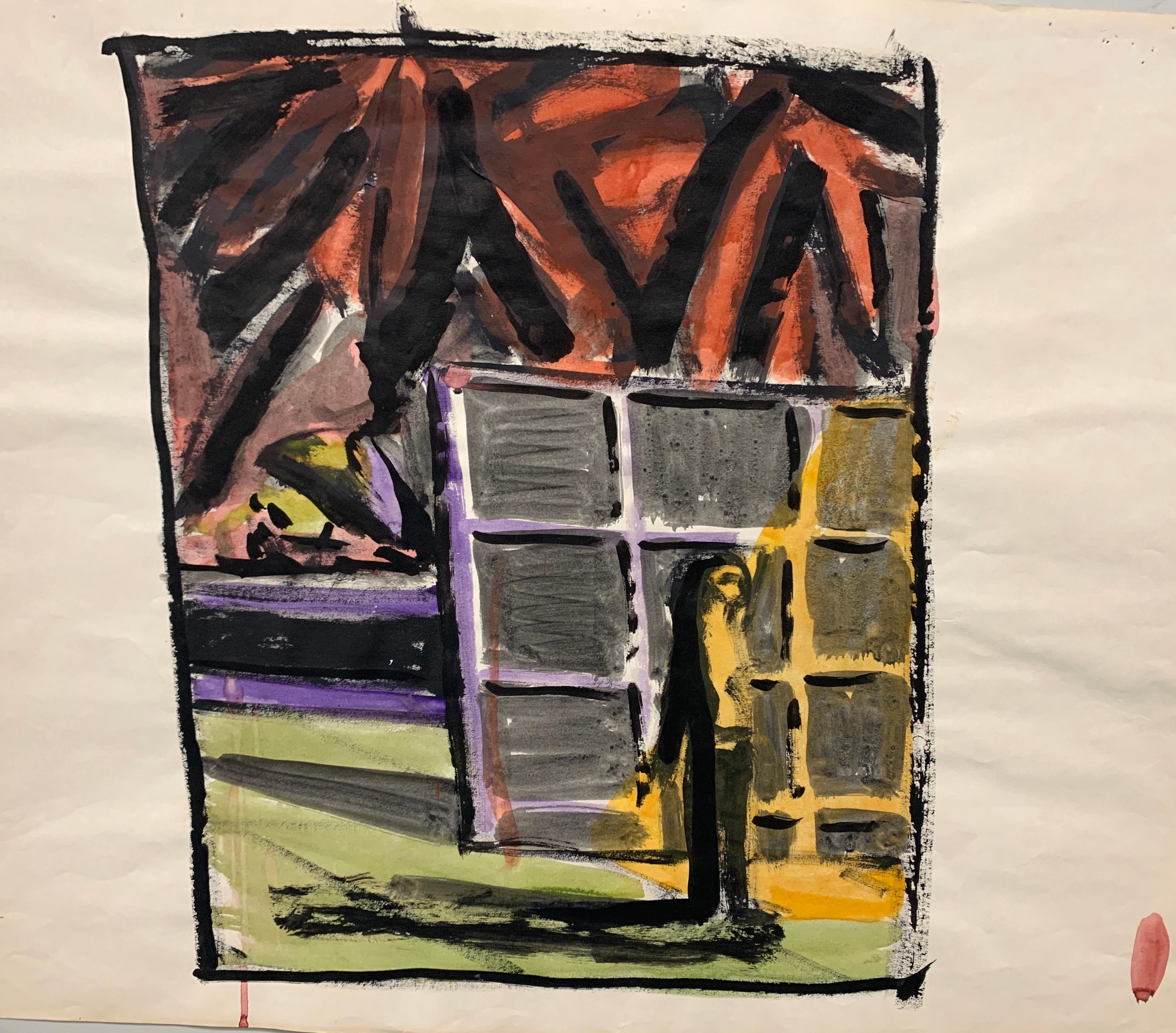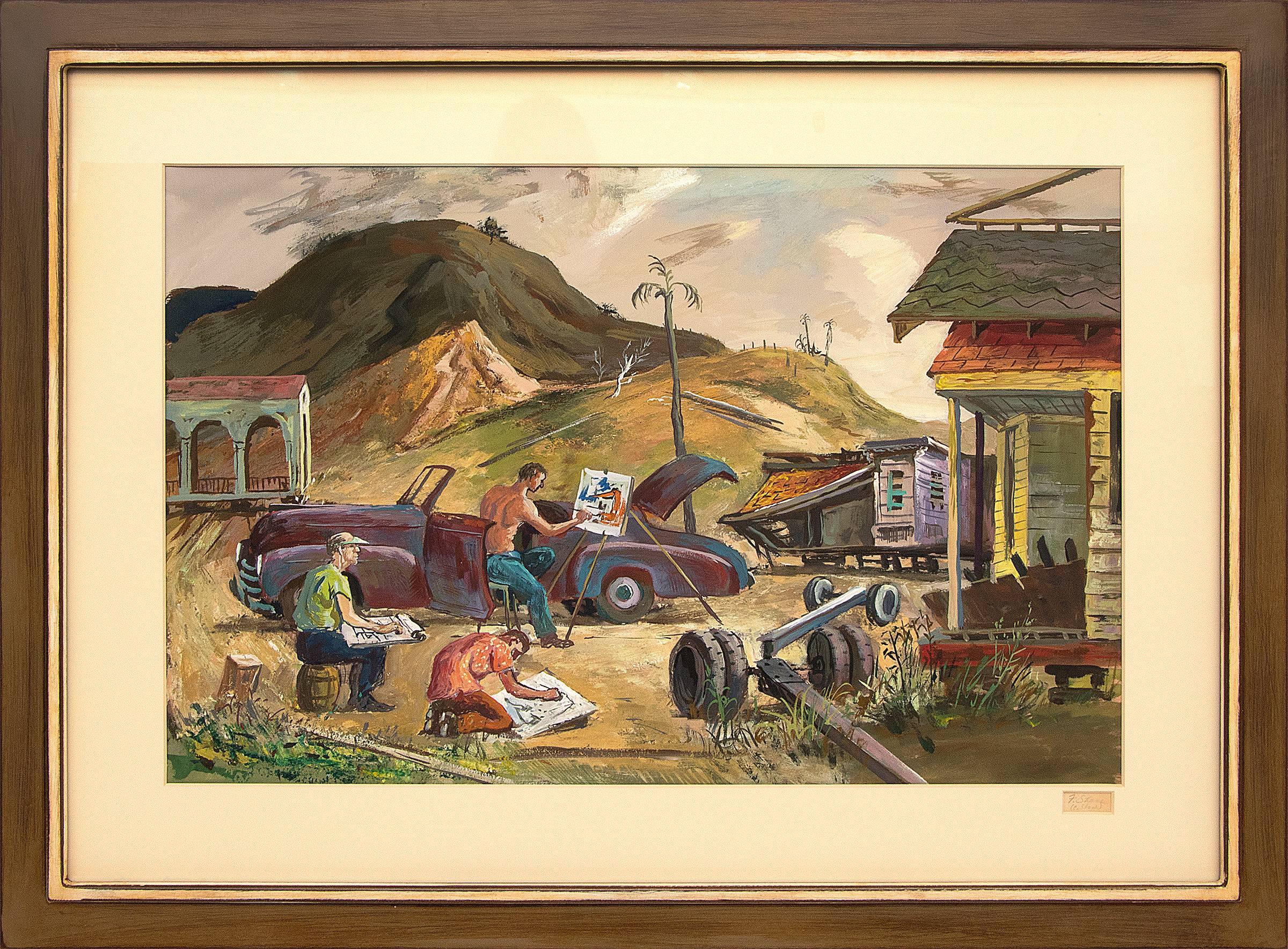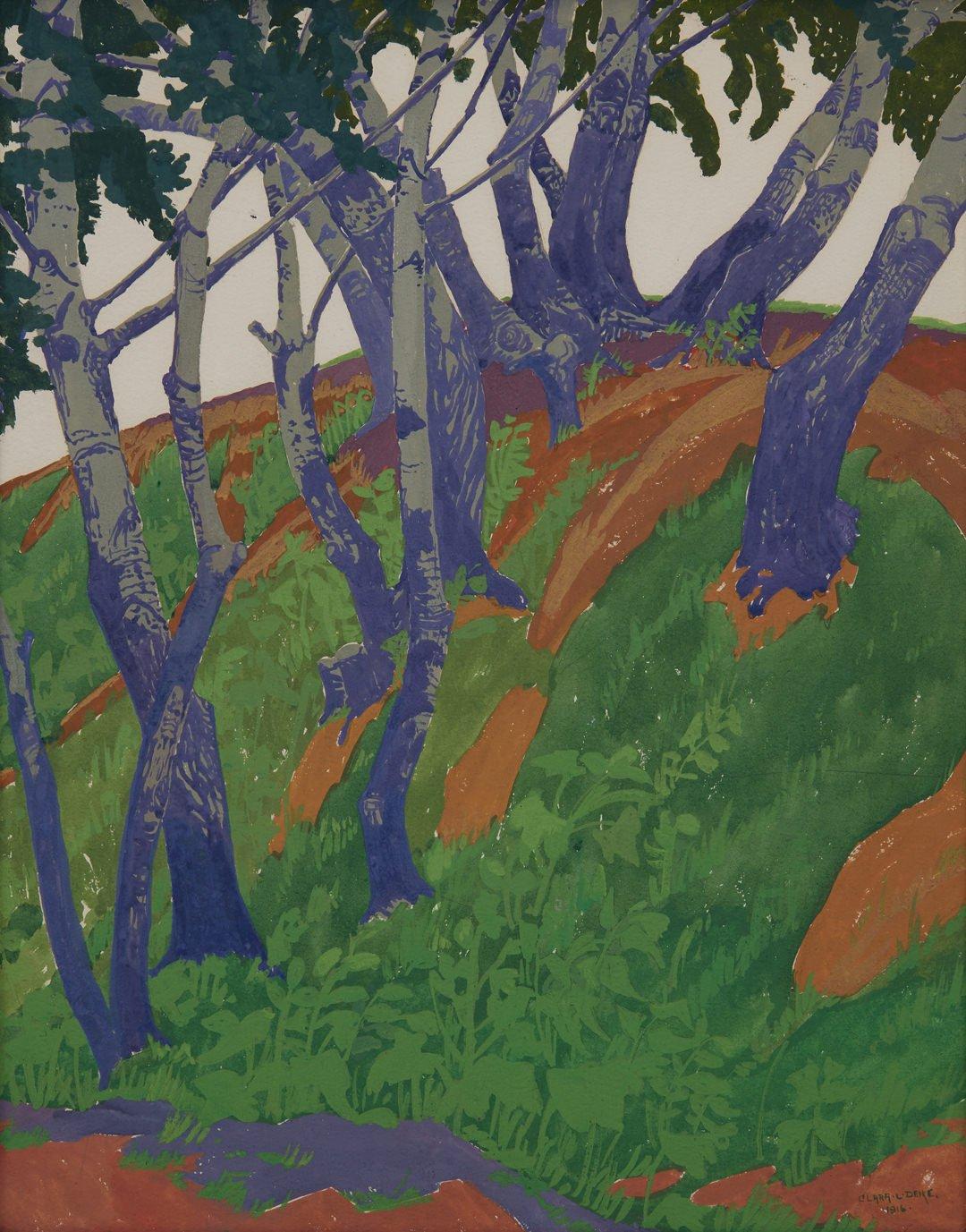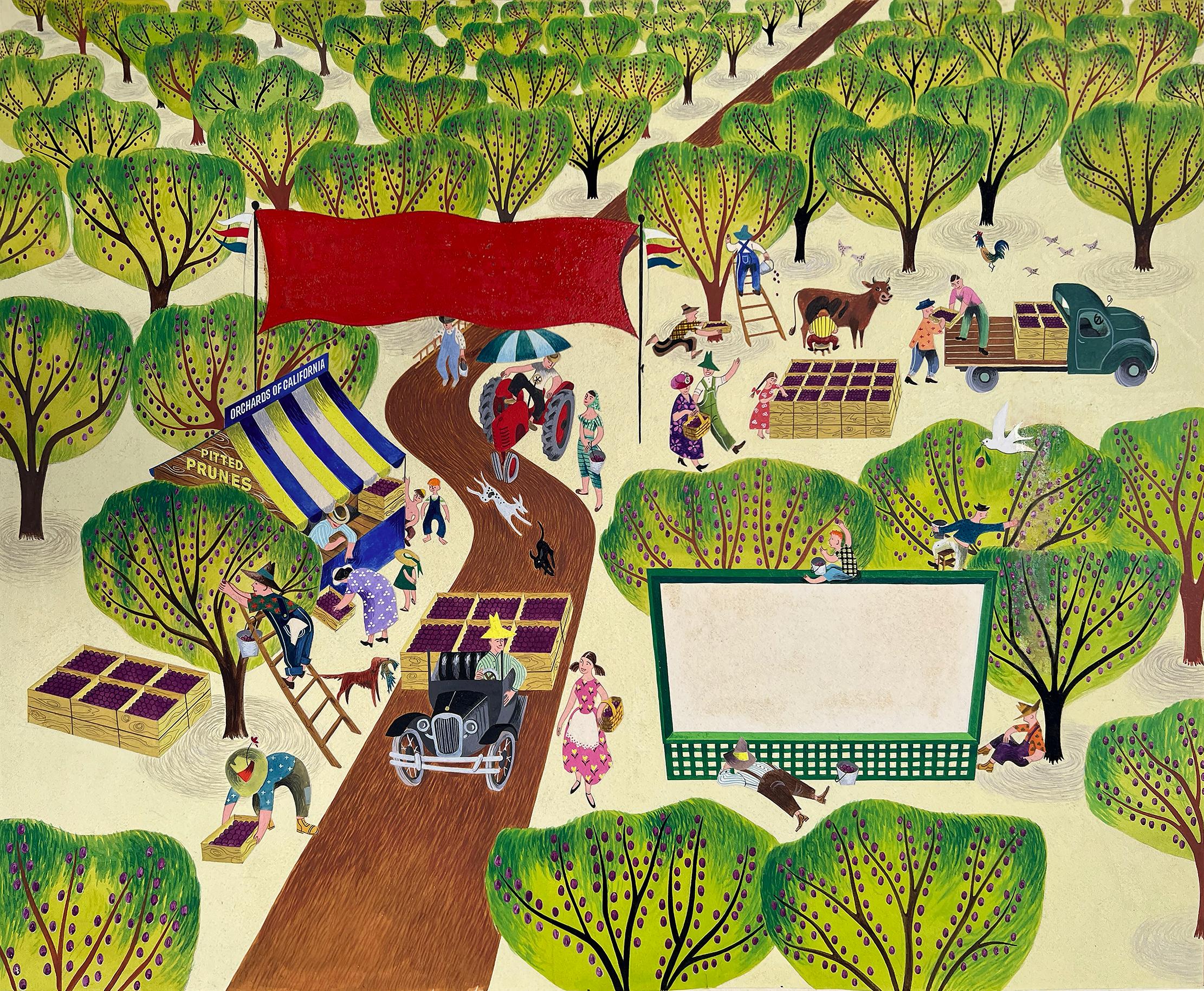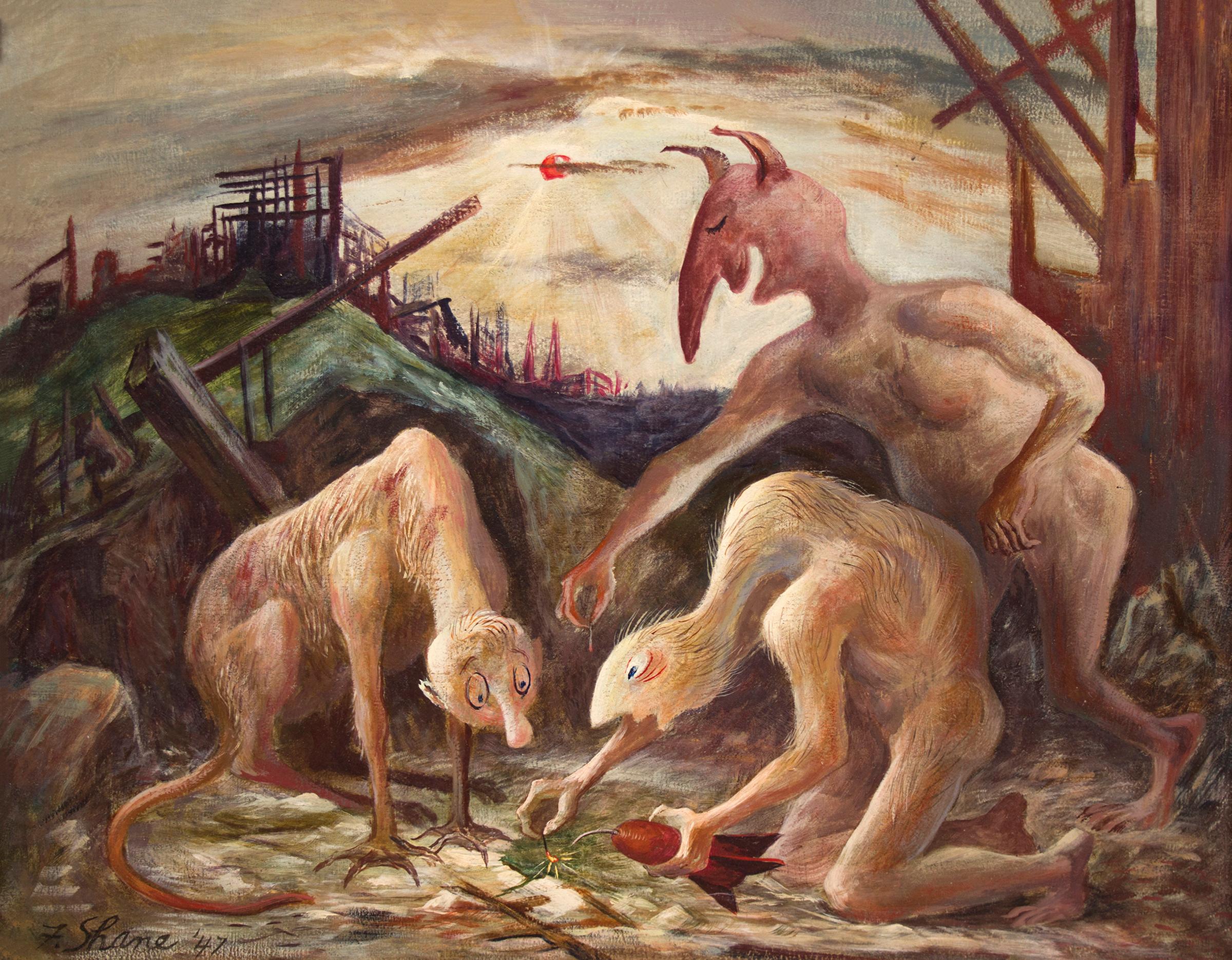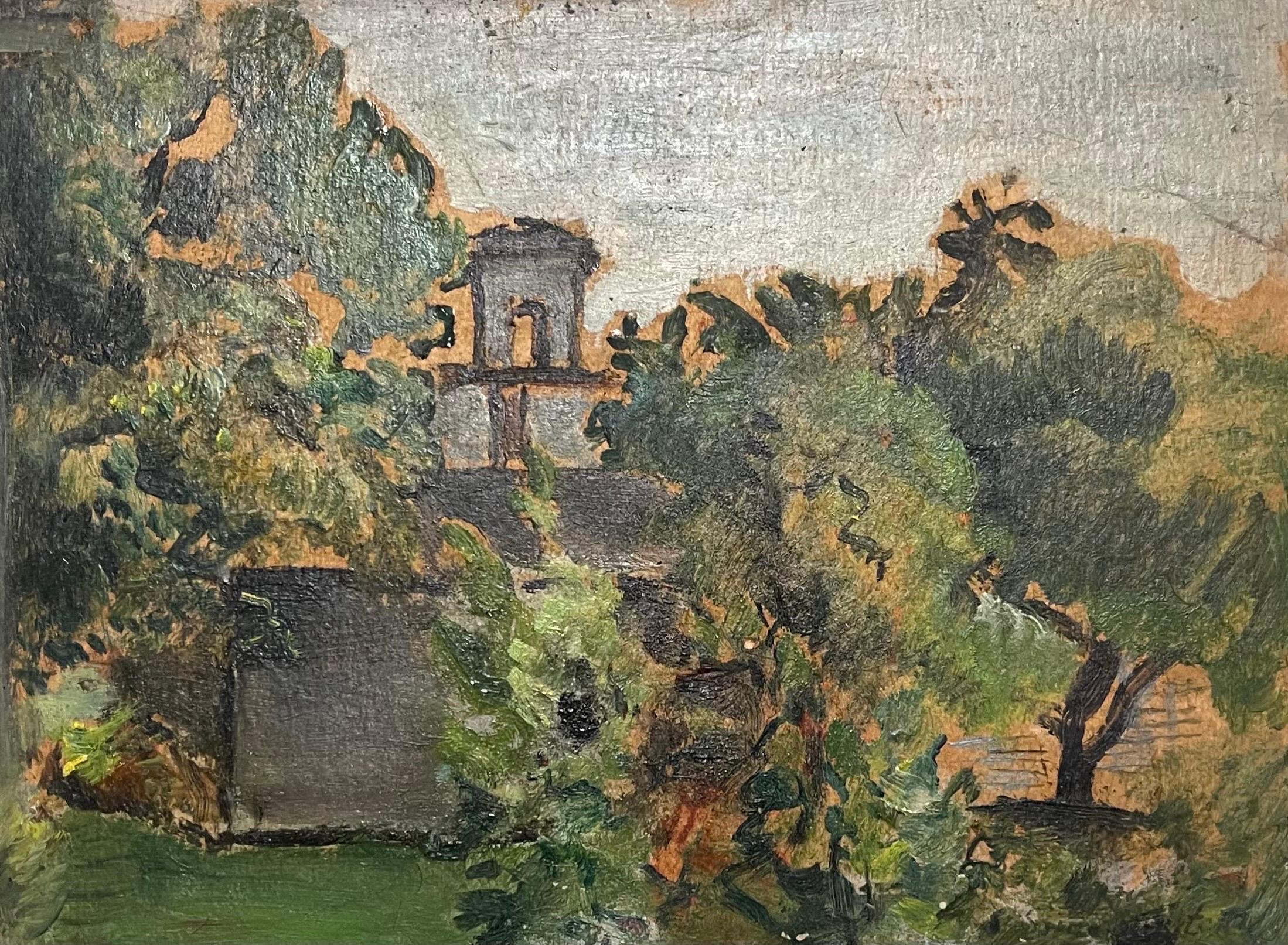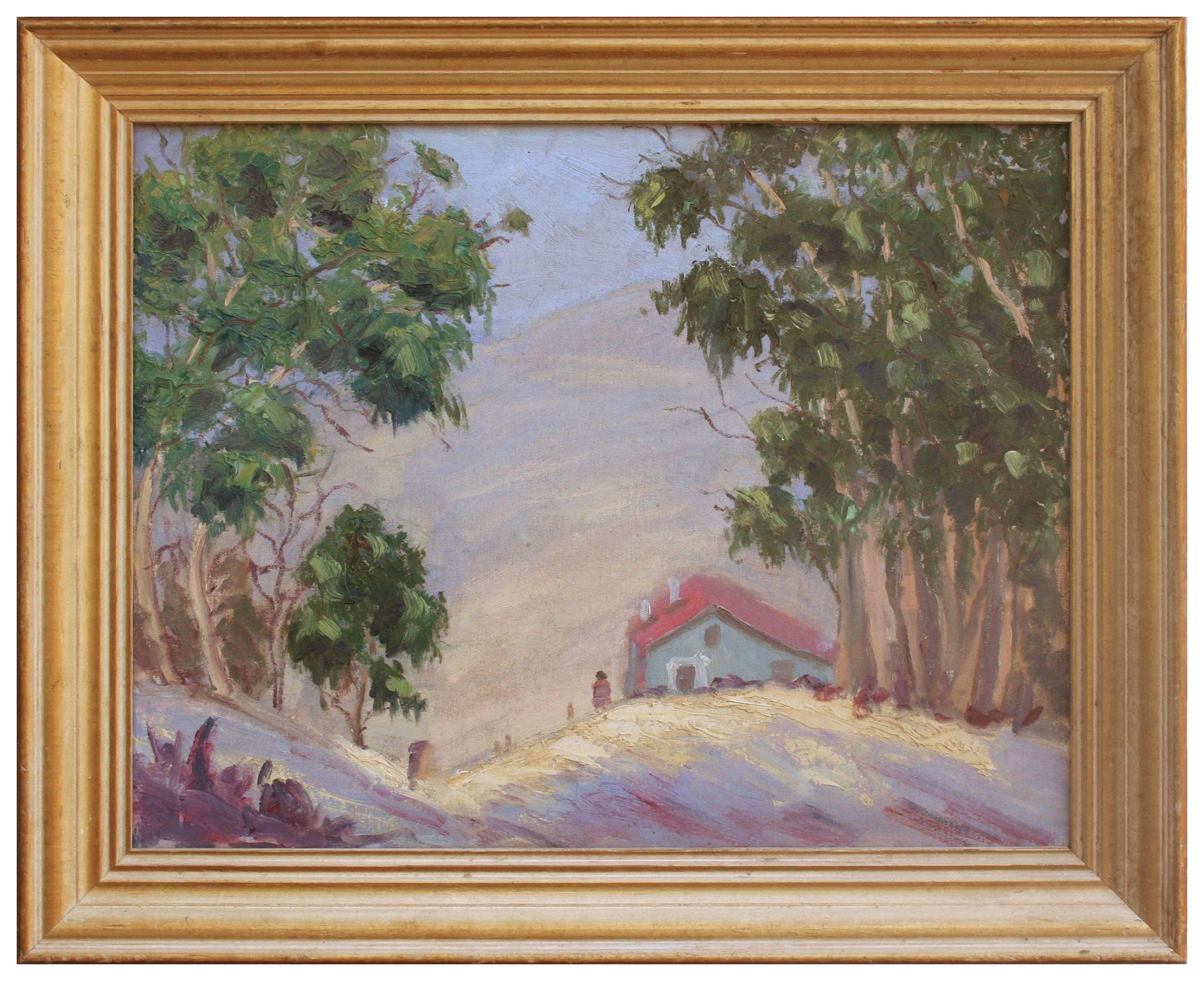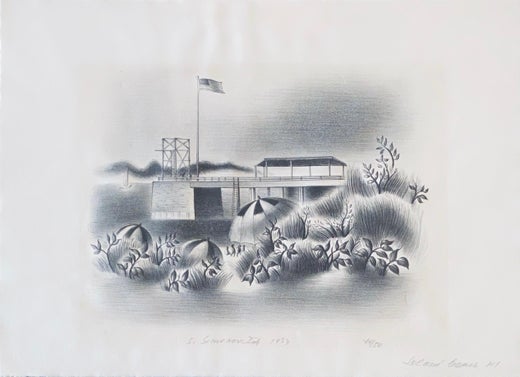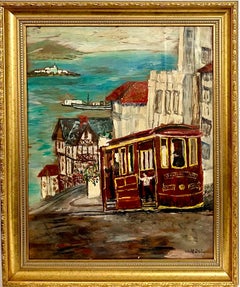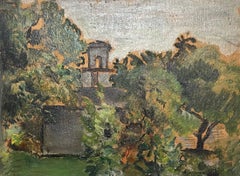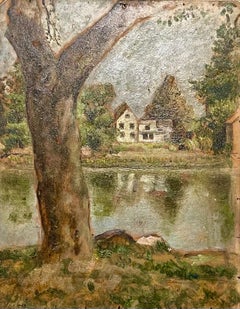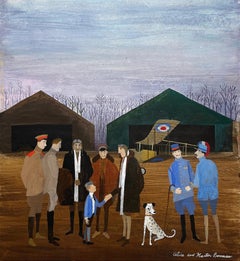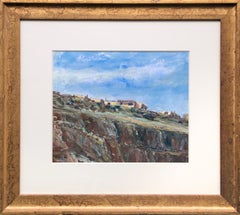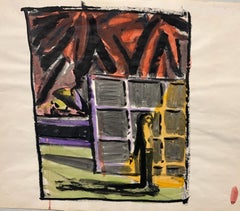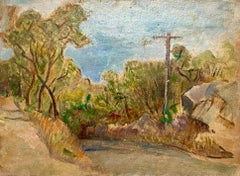
Simka Simkhovitch WPA Artist Oil Painting Gouache American Modernist Powerline
View Similar Items
Want more images or videos?
Request additional images or videos from the seller
1 of 7
Simka SimkhovitchSimka Simkhovitch WPA Artist Oil Painting Gouache American Modernist Powerlinec.1930's
c.1930's
$1,200List Price
About the Item
- Creator:Simka Simkhovitch (1893 - 1949, Russian, American)
- Creation Year:c.1930's
- Dimensions:Height: 6 in (15.24 cm)Width: 8 in (20.32 cm)
- Medium:
- Movement & Style:
- Period:
- Condition:good. minor wear. please see photos.
- Gallery Location:Surfside, FL
- Reference Number:1stDibs: LU38210484932
Simka Simkhovitch
Simka Simkhovitch was born near the city of Kiev, Russia. When he was 7, he spent a year in bed with a severe case of measles. To amuse himself he used to sketch an old mill outside his window, and thus decided to become an artist. He studied at an art school in Odessa and was recommended to attend the Imperial Academy of St. Petersburg (a singular honor in Russia at the time) before the war and revolution. Swept up into the army before he could attend, his work was hung in the Museum of Revolution in Leningrad. He resumed his studies in 1914 and graduated four years later. He was sent to the United States in 1924 to do illustrations for Soviet textbooks. He quickly applied for and gained U.S. citizenship. Simkhovitch integrated with the art world immediately and galleries such as Midtown Galleries and Marie Sterner took him on as part of their stable of artists. He also was employed by the WPA and executed major mural commissions throughout the country. One of his largest commissions was the Mississippi Court House. Life magazine profiled him twice with full-length features on his life here in this country as an artist. When he died at an early age, the Whitney Museum of Art in New York offered to do a retrospective and the widow denied the possibility and simply put his works away in storage. Considered a master draftsman and an adherent of certain classicism, Simkhovitch’s compositions are often built up in a complicated but well-managed counterpoint. But at heart, he is a romanticist preferring the dreamy colors of a Russian fairy tale.
About the Seller
4.9
Platinum Seller
Premium sellers with a 4.7+ rating and 24-hour response times
Established in 1995
1stDibs seller since 2014
1,794 sales on 1stDibs
Authenticity Guarantee
In the unlikely event there’s an issue with an item’s authenticity, contact us within 1 year for a full refund. DetailsMoney-Back Guarantee
If your item is not as described, is damaged in transit, or does not arrive, contact us within 7 days for a full refund. Details24-Hour Cancellation
You have a 24-hour grace period in which to reconsider your purchase, with no questions asked.Vetted Professional Sellers
Our world-class sellers must adhere to strict standards for service and quality, maintaining the integrity of our listings.Price-Match Guarantee
If you find that a seller listed the same item for a lower price elsewhere, we’ll match it.Trusted Global Delivery
Our best-in-class carrier network provides specialized shipping options worldwide, including custom delivery.More From This Seller
View AllSimka Simkhovitch WPA Artist Oil Painting Gouache American Modernist Powerline
By Simka Simkhovitch
Located in Surfside, FL
Simka Simkhovitch (Russian/American 1893 - 1949)
This came with a small grouping from the artist's family, some were hand signed some were not.
These were studies for larger paintin...
Category
1930s American Modern Landscape Paintings
Materials
Oil, Gouache, Board
San Francisco Cable Car WPA Artist Adolf Dehn Modernist Art Gouache Oil Painting
By Adolf Dehn
Located in Surfside, FL
ADOLF ARTHUR DEHN (American, 1895-1969)
San Francisco Bay Area street scene, with Trolley, Streetcar, Cable Car with bay and Alcatraz Island in background.
Hand signed LRC.
Sight 19" x 15", overall 23" x 19".
Adolf Dehn (November 22, 1895 – May 19, 1968) was an American artist known mainly as a lithographer. Throughout his artistic career, he participated in and helped define some important movements in American art, including regionalism, social realism, and caricature. A two-time recipient of the Guggenheim Fellowship, he was known for both his technical skills and his high-spirited, droll depictions of human foibles.
Adolph Dehn was born in 1895 in Waterville, Minnesota. He began creating artwork at the age of six, and by the time of his death had created nearly 650 images.
Dehn went to the Minneapolis School of Art (known today as the Minneapolis College of Art and Design), where he met and became a close friend of Wanda Gag. In 1917 he and Gág were two of only a dozen students in the country to earn a scholarship to the Art Students League of New York. He was drafted to serve in World War I in 1918, but declared himself a conscientious objector and spent four months in a guardhouse detention camp in Spartanburg, SC and then worked for eight months as a painting teacher at an arm rehabilitation hospital in Asheville, NC. Later, Dehn returned to the Art Students League for another year of study and created his first lithograph, The Harvest.
In 1921 Dehn's lithographs were featured in his first exhibition at Weyhe Gallery in New York City. From 1920 to 1921 in Manhattan, he was connected to New York's politically left-leaning activists. In 1921, he went to Europe. In Paris and Vienna he belonged to a group of expatriate intellectuals and artists, including Andrée Ruellan, Gertrude Stein, and ee cummings...
Category
1930s American Modern Figurative Paintings
Materials
Gouache, Oil
Simka Simkhovitch WPA Artist Oil Painting American Modernist Landscape w Tower
By Simka Simkhovitch
Located in Surfside, FL
Simka Simkhovitch (Russian/American 1893 - 1949)
This came with a small grouping from the artist's family, some were hand signed some were not.
These were studies for larger paintin...
Category
1930s American Modern Landscape Paintings
Materials
Oil, Board
Simka Simkhovitch WPA Artist Oil Painting American Modernist Landscape Pond Tree
By Simka Simkhovitch
Located in Surfside, FL
Simka Simkhovitch (Russian/American 1893 - 1949)
This came with a small grouping from the artist's family, some were hand signed some were not.
These were studies for larger paintin...
Category
1930s American Modern Landscape Paintings
Materials
Oil, Board
1972 Gestural Oil Painting Boat in Harbor Figural Abstraction Raoul Middleman
By Raoul Middleman
Located in Surfside, FL
Raoul Middleman (born 1935 in Baltimore, Maryland) is an American painter. Middleman has been a member of the Maryland Institute College of Art faculty since 1961. American University Museum at the Katzen Center has described Middleman as a "Baltimore maestro [whose] nudes are not pretty—they are sagging, dimpled, and real. His cityscapes reveal the underbelly of post-industrial rot, his narrative paintings give contemporary life to his personal obsessions. They are intelligent, messy, and utterly masterful."
From an interview with RM "I was doing abstract art. Then Roy Lichtenstein came around, and I wanted to be current. I remember Grace Hartigan said, “You’ve gotta go to New York, seize destiny by the hand.” My friend Jon Schueler took my slides up to Eleanor Ward, who had the Stable Gallery. My Pop art paintings were discovered. I moved to New York into Malcolm Morley’s old loft down on South Street. Agnes Martin was upstairs... People who interest me come from different quarters. I knew guys around Schueler, like B.H. Friedman. But I also knew the Pop world pretty well – Al Hansen, Richard Artschwager, Lichtenstein. I became friends with Raoul Hague...
Category
1970s American Modern Landscape Paintings
Materials
Oil, Board
Bathers at the Quarry 1940s American Modernist Oil Painting WPA era
By Theresa Berney Loew
Located in Surfside, FL
Swimmers and sun tanners at the local watering hole.
Her birth name was Theresa Berney. At the time of her passing she was known as Theresa Loew.
Birth place: Baltimore
artist, blo...
Category
1940s American Modern Landscape Paintings
Materials
Oil, Board
You May Also Like
"Union Square" NYC American Scene Social Realism Modernism WPA Mid-20th Century
By Agnes Hart
Located in New York, NY
"Union Square" NYC American Scene Social Realism Modernism WPA Mid-20th Century
Agnes Hart (American, 1912-1979)
"Union Square, New York City"
Sight: 14 1/2 x 21 1/2 inches
Gouache...
Category
1940s American Modern Landscape Paintings
Materials
Gouache, Board
"The Glorious Flight - Across the Channel with Louis Bleriot" - Children's Book
By Alice and Martin Provensen
Located in Miami, FL
Study for "The Glorious Flight - Across the Channel with Louis Bleriot"; 1983; Gouache on Illustration Board; 14.5" x 13.75"; Signed Lower Right; Unframed.
From Wikipedia, the free encyclopedia
Alice Rose[1] Provensen (née Twitchell; August 14, 1918[2] – April 23, 2018[3]) and Martin Provensen...
Category
1980s American Modern Figurative Paintings
Materials
Gouache, Board
1970s Acoma Pueblo, New Mexico Southwest Landscape Gouache Painting, Signed Art
Located in Denver, CO
This stunning gouache painting by Wolfgang Pogzeba (1936-1982) captures the beauty of Acoma Pueblo, New Mexico, depicting a dramatic cliffside landsca...
Category
1970s American Modern Landscape Paintings
Materials
Gouache
1950s "Figure in Shadow" Figurative Gouache Painting America Modernist
By Donald Stacy
Located in Arp, TX
Donald Stacy
"Figure in Shadow"
c.1950s
Gouache paint on paper
24" x 18" unframed
Unsigned
Came from artist's estate
Donald Stacy (1925-2011) New Jersey
Studied: Newark School of Fine Art
The Art Students League
Pratt Graphic Arts Center
University of Paris 1953-54
University of Aix-en-Provence 1954-55
Faculty: Art Department of the New School
Museum of Modern Art
School of Visual Arts
Stacy Studio Workshop
Exhibitions: Grand Central Moderns
George Wittenborn
The New School
Print Exhibitions, Chicago
University of Oklahoma
Honolulu Museum
Monclair Museum
Wisconsin State College
Louisiana Art...
Category
Mid-20th Century American Modern Figurative Paintings
Materials
Paper, Gouache
Artists Sketching, California, 1940s Large Modernist Gouache Painting, Landscape
By Frederick Shane
Located in Denver, CO
This original 1940s American Modernist gouache painting, "Artists Sketching (California)," captures a dynamic scene of three artists at work against a majestic mountain backdrop. With expressive brushwork and a rich color palette, the piece embodies Frederick E. Shane’s signature blend of realism and modernist abstraction. Signed, titled, and dated by the artist in the lower margin, this remarkable artwork reflects the era’s Regionalist influence and the artist’s keen eye for capturing creative moments in the natural landscape.
The painting is professionally housed in a custom archival frame, ensuring long-term preservation. Frame dimensions: 25.5 x 37.5 x 1.5 inches. Image size: 20.25 x 29.75 inches.
Provenance: Estate of the Artist, Frederick Shane
About the Artist: Frederick E. Shane (1906-1992)
A celebrated Missouri Regionalist painter and printmaker, Frederick E. Shane was known for his compelling genre scenes, landscapes, seascapes, and portraits in a variety of media, including oil, watercolor, gouache, tempera, and lithography. While fundamentally a realist, Shane often incorporated elements of abstraction, expressionism, and surrealism, adding depth and emotion to his compositions.
During the summers of 1925-26, Shane studied under Randall Davey at the Broadmoor Academy in Colorado Springs, an institution founded in 1919 by philanthropists Spencer and Julie Penrose. Shane remained closely connected to the Colorado Springs Fine Arts Center, the Academy’s successor, throughout the 1940s and early 1950s, participating in Artists West of the Mississippi exhibitions and forming lasting friendships with key figures like Boardman Robinson and Adolph Dehn...
Category
1940s American Modern Landscape Paintings
Materials
Gouache
Hillside and Stream, early 20th century modernist Cleveland School painting
Located in Beachwood, OH
Clara Deike (American, 1881-1964)
Hillside and Stream, 1916
Gouache on paper
Signed and dated lower right
22 x 18 inches
25.5 x 21.5 inches, framed
A graduate of the Cleveland Schoo...
Category
1910s American Modern Figurative Paintings
Materials
Gouache
Recently Viewed
View AllMore Ways To Browse
Greece Landscape Oil Painting
1930s Italian Paintings
American Revolution Painting
Oil Painting Of North Africa
Wpa Mural
Artist Painting Landscape Wpa
Oil On Board Paintings 1940s
Four Horse Paintings
American Work Bench
Vintage Hunting Painting
Bernard City Paintings
Small Fruit Oil Paintings
1930s Magazine Illustration
Cape May Painting
Wpa Portrait
1940s Landscape Painting California
California Oil Painting 1940s
Frida Kahlo Painting

